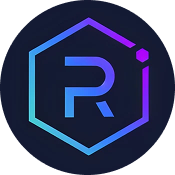In a landscape where blockchain performance and decentralized liquidity are paramount, Zilliqa and Balancer emerge as pioneering solutions designed to tackle distinct yet interconnected challenges. Zilliqa's revolutionary sharding technology aims to scale transaction throughput seamlessly, making it a prime choice for high-performance decentralized applications. Conversely, Balancer's innovative approach to automated market making introduces unparalleled flexibility for liquidity pools, enabling complex DeFi strategies. This comparison delves into the core architectures, unique features, and ideal use cases of these two platforms, providing a comprehensive understanding for enthusiasts and investors eager to navigate the evolving blockchain terrain.
Short on time? Jump to Zilliqa vs Balancer Comparison
Understanding Zilliqa and Balancer ?
Zilliqa stands out as the world's first sharded blockchain, launched in 2017 to address the longstanding scalability issues faced by earlier blockchain networks. Its architecture leverages sharding, dividing the network into smaller, manageable pieces called shards, each capable of processing transactions in parallel, thus significantly increasing throughput. Zilliqa employs a unique smart contract language called Scilla, designed with formal verification to enhance security and reduce vulnerabilities common in other smart contract languages. The platform's core strength lies in its ability to deliver high transaction speeds with low fees, making it suitable for enterprise-grade decentralized applications (dApps). As the network evolves, Zilliqa continues to implement upgrades like EVM compatibility and a new consensus mechanism, aiming to further improve efficiency and developer experience.
Balancer, on the other hand, is a decentralized finance (DeFi) protocol that introduces the concept of programmable liquidity through customizable pools. Unlike traditional automated market makers (AMMs) like Uniswap, Balancer allows for the creation of pools with up to eight different tokens, each with arbitrary weights, enabling users to manage diversified portfolios passively or create index funds. Its architecture supports complex liquidity provisioning, making it a vital component for decentralized exchanges and DeFi infrastructure. By automatically maintaining token ratios according to set weights, Balancer offers a flexible and dynamic liquidity solution. The protocol is continuously evolving, with recent updates focusing on gas efficiency and expanding its application scope within the DeFi ecosystem.
Both platforms emphasize security and flexibility—Zilliqa through its secure, peer-reviewed language and scalable architecture, and Balancer through its highly customizable, multi-token pools. Their distinct approaches cater to different aspects of blockchain technology: Zilliqa prioritizes scalability and high throughput for decentralized applications, while Balancer focuses on creating efficient, adaptable liquidity pools for diverse DeFi strategies. Understanding these foundational differences helps in assessing their potential to shape the future of blockchain technology and decentralized finance.
As blockchain technology matures, the integration of scalable infrastructure like Zilliqa and flexible liquidity solutions like Balancer reflects the broader trend toward more versatile and performant decentralized ecosystems. Both projects are at the forefront of innovation—Zilliqa by addressing the critical bottleneck of scalability, and Balancer by redefining liquidity management with multi-token pools—offering promising avenues for developers and investors alike.
Key Differences Between Zilliqa and Balancer
Core Functionality
- Zilliqa: Zilliqa serves as a high-throughput blockchain platform optimized for scalable decentralized applications through sharding technology. Its architecture is designed to process thousands of transactions per second with instant finality, making it well-suited for enterprise solutions and complex dApps requiring speed and security.
- Balancer: Balancer functions as an advanced automated market maker protocol that facilitates decentralized liquidity pools with multiple tokens and customizable weights. Its primary focus is enabling flexible liquidity management, index fund creation, and DeFi integrations, rather than high transaction throughput.
Technology and Architecture
- Zilliqa: Zilliqa employs sharding combined with a proof-of-work (PoW) initial security layer and a practical Byzantine Fault Tolerance (pBFT) consensus mechanism for finality. Its smart contracts are written in Scilla, a language emphasizing security and formal verification, and the network is progressing toward Ethereum Virtual Machine (EVM) compatibility to support Solidity-based dApps.
- Balancer: Balancer is built on Ethereum and utilizes its smart contract capabilities to create pools with arbitrary token weights. It generalizes the constant product formula, supporting up to eight tokens per pool, with dynamic rebalancing to maintain specified ratios. Its architecture emphasizes flexibility and composability within the DeFi ecosystem.
Use Cases
- Zilliqa: Zilliqa is ideal for developers seeking to build scalable dApps, financial services, and enterprise solutions that demand high throughput and security. Its low fees and fast finality make it suitable for microtransactions, gaming, and real-time applications.
- Balancer: Balancer is suited for liquidity providers, portfolio managers, and DeFi protocols aiming to create flexible, multi-token pools. Its applications include decentralized exchanges, index funds, and complex DeFi strategies that leverage customizable pools and passive management.
Security Model
- Zilliqa: Zilliqa emphasizes security through its peer-reviewed smart contract language Scilla and a hybrid consensus mechanism that combines PoW with pBFT for finality. The network's sharding also introduces complexity but enhances scalability without compromising security.
- Balancer: Balancer's security relies heavily on Ethereum's robust smart contract infrastructure, with audits and ongoing improvements to mitigate risks associated with multi-token pools and complex rebalancing logic.
Scalability and Performance
- Zilliqa: Zilliqa's sharding architecture enables linear scalability, supporting over 2,800 transactions per second in experimental settings, with fast finality suitable for high-demand enterprise applications.
- Balancer: Balancer's performance is tied to Ethereum's network capacity; while efficient for liquidity management, it does not inherently improve transaction throughput but offers extensive flexibility in liquidity provisioning.
Zilliqa vs Balancer Comparison
| Feature | ✅ Zilliqa | ✅ Balancer |
|---|---|---|
| Primary Function | High-performance blockchain for dApps | Decentralized liquidity pools and DeFi protocols |
| Technology | Sharding + pBFT + Scilla | Ethereum smart contracts + customizable pools |
| Transaction Speed | Over 2,800 TPS (experimental) | Dependent on Ethereum network |
| Smart Contract Language | Scilla | Solidity (via EVM compatibility) |
| Ideal Use Case | Scalable dApps, enterprise solutions | Liquidity management, DeFi strategies |
| Native Token | ZIL | None (used for gas on Ethereum) |
Ideal For
Choose Zilliqa: Developers and enterprises seeking scalable, secure blockchain infrastructure for high-throughput applications.
Choose Balancer: DeFi enthusiasts, liquidity providers, and portfolio managers looking for flexible, multi-token pools and decentralized liquidity solutions.
Conclusion: Zilliqa vs Balancer
Zilliqa and Balancer exemplify the diverse innovations driving blockchain evolution: one by addressing scalability bottlenecks with sharding, and the other by redefining liquidity provision through customizable pools. Zilliqa's architecture is tailored for high-speed, secure decentralized applications, making it a strong candidate for enterprise adoption and real-time use cases. Meanwhile, Balancer's flexible multi-token pools empower the DeFi ecosystem with diverse liquidity management options, fostering innovation in decentralized finance strategies.
Choosing between the two depends on specific needs: if scalability and transaction speed are paramount, Zilliqa offers a compelling solution with its pioneering sharding technology. Conversely, for those focused on liquidity management, DeFi strategy deployment, and portfolio diversification, Balancer provides unmatched flexibility and composability within the Ethereum ecosystem. Both platforms are poised to influence the future of blockchain, each excelling in their respective domains—scaling the heights of performance and expanding the horizons of decentralized finance.






